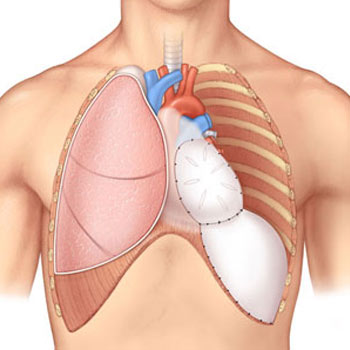What is Pneumonectomy?
A pneumonectomy is a surgical procedure performed to remove an entire lung. This operation is typically considered when treating severe lung diseases such as lung cancer, extensive tuberculosis, or severe chronic obstructive pulmonary disease (COPD). The decision to remove a lung is not taken lightly, as it significantly impacts respiratory function. However, it can be life-saving for patients with severe lung pathology that cannot be managed by other means.
Indications for Pneumonectomy
The most common indication for a pneumonectomy is lung cancer. When the cancer is localized to one lung and cannot be effectively treated with less invasive surgeries or therapies, removing the lung may be necessary to prevent the spread of cancer. Other conditions that may require a pneumonectomy include
- Tuberculosis: Severe, drug-resistant TB that destroys lung tissue
- Trauma: Significant damage to a lung that cannot be repaired
- Congenital Lung Diseases: Certain birth defects that affect lung function
- Chronic Infections: Recurrent lung infections that lead to the destruction of lung tissue
What is the procedure for a total lung dissection?
A pneumonectomy involves a total lung dissection, where the surgeon removes the entire lung from the chest cavity. The steps of this complex procedure typically include
Preoperative Preparation
This involves thorough medical evaluation, including imaging studies like chest X-rays and CT scans, pulmonary function tests, and sometimes a biopsy
Anesthesia
The patient is placed under general anesthesia to ensure they are unconscious and pain-free during the surgery
Incision
The surgeon makes an incision in the chest (thoracotomy) to access the lung. This incision can be made on the side of the chest or through the back, depending on the lung's location and the surgeon's preference
Lung Removal
The surgeon carefully dissects and removes the lung from surrounding tissues, blood vessels, and the bronchus (the main airway). Major blood vessels that supply the lung are ligated (tied off) to prevent bleeding
Chest Tube Placement
After the lung is removed, a chest tube is inserted to drain fluids and air from the chest cavity, allowing the remaining space to heal.
Closure
The incision is closed with sutures or staples, and the patient is taken to the recovery room for monitoring
Recovery and Postoperative Care
Recovery from a pneumonectomy is extensive and requires careful management. Immediately following the surgery, patients are closely monitored in the intensive care unit (ICU). Pain management is a crucial aspect of postoperative care, often requiring the use of epidural analgesia or intravenous pain medications
Patients are typically encouraged to begin gentle physical activity soon after surgery to promote lung function and prevent complications such as pneumonia or blood clots. Respiratory therapy, including breathing exercises and the use of incentive spirometers, is essential to help the remaining lung adapt and increase its capacity
Life After Pneumonectomy
Living with one lung requires adjustments, but many patients can lead a relatively normal life post-surgery. Pulmonary rehabilitation programs can be beneficial, offering tailored exercise routines and education on managing breathlessness and conserving energy.
Patients are advised to avoid smoking and exposure to lung irritants, follow a healthy diet, and maintain regular follow-up appointments with their healthcare providers to monitor lung function and overall health.
Pneumonectomy, or total lung dissection, is a significant surgical procedure primarily used to treat severe lung conditions, most commonly lung cancer. While the recovery process is demanding and the risks are substantial, the surgery can offer a chance for improved quality of life and increased longevity for patients with life-threatening lung diseases. With appropriate care and lifestyle adjustments, individuals can adapt and thrive with one lung.

